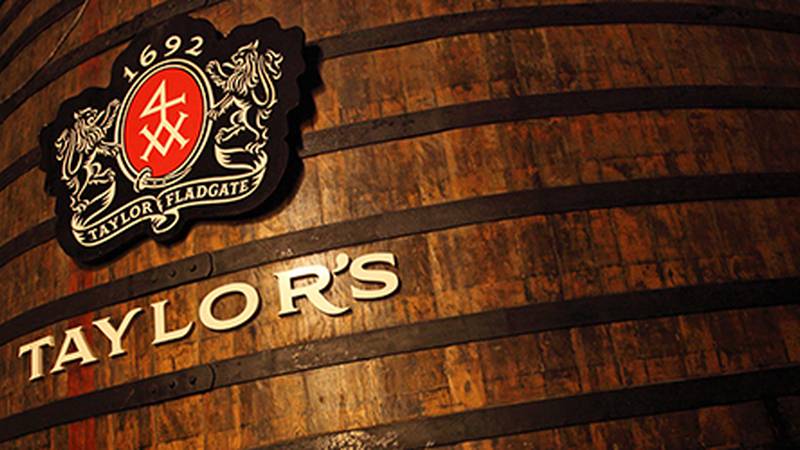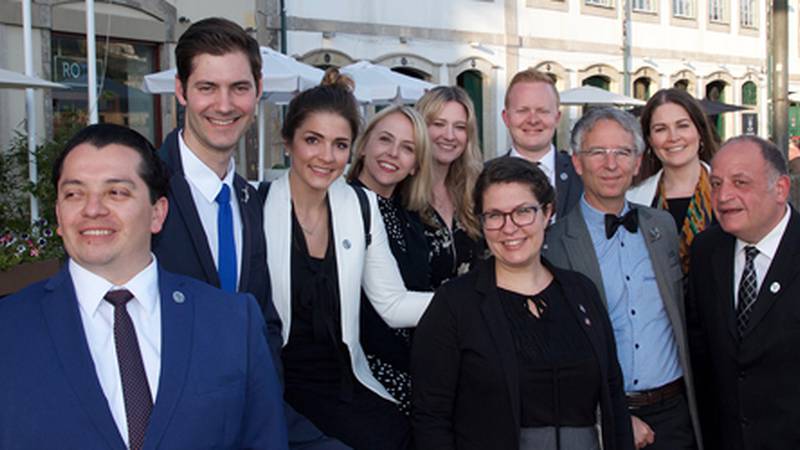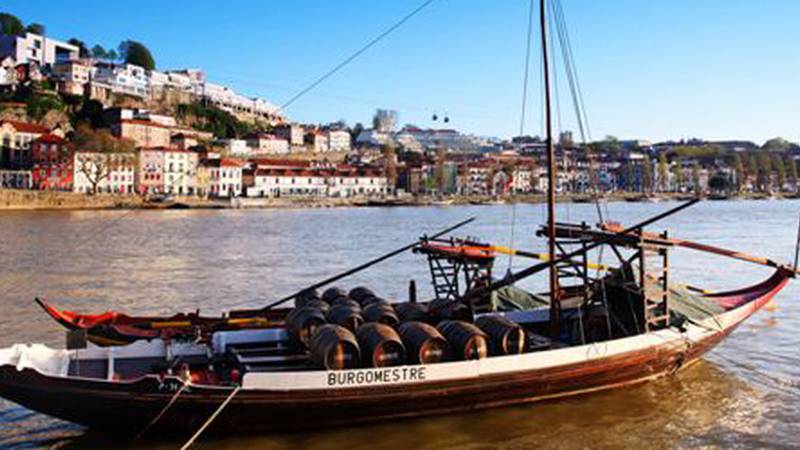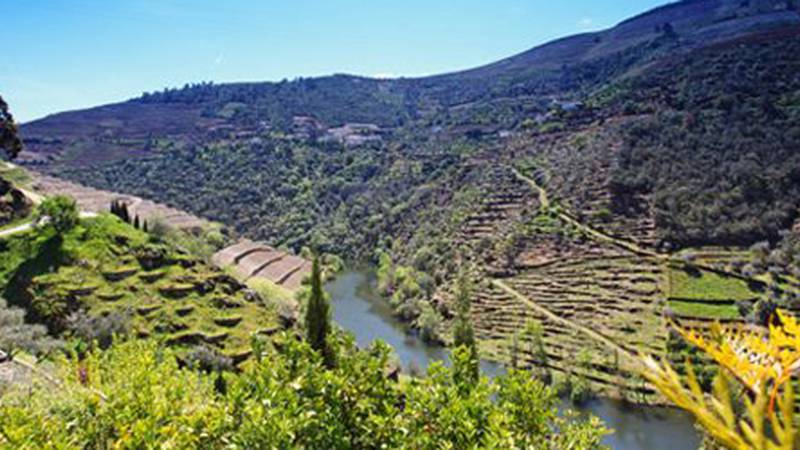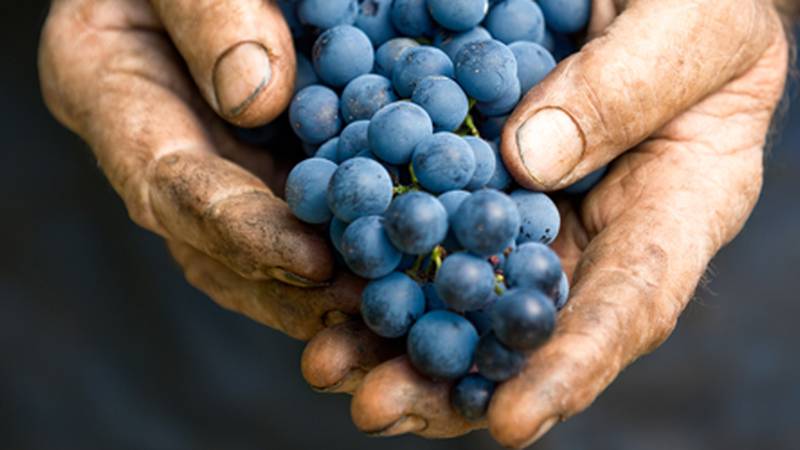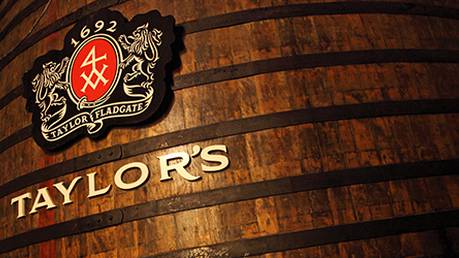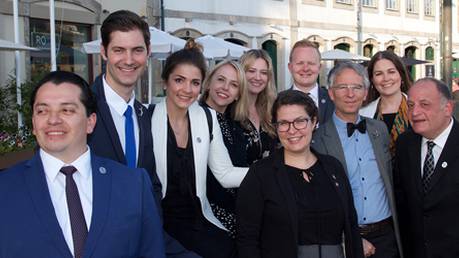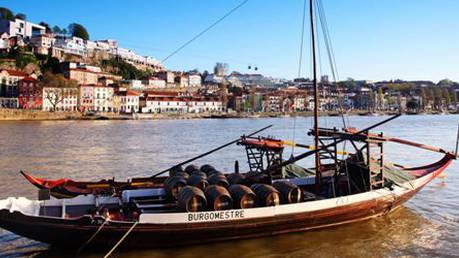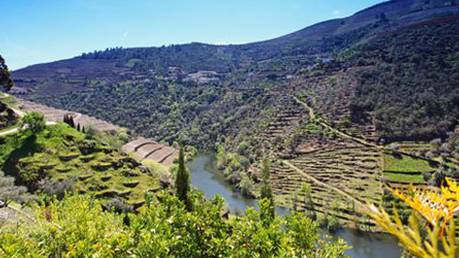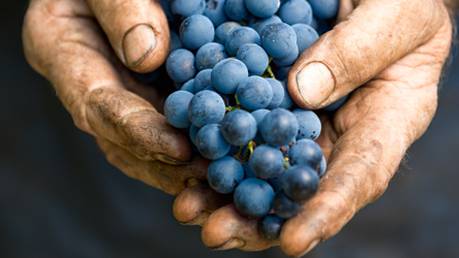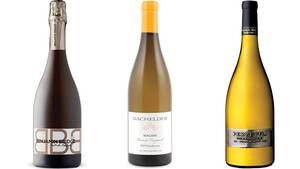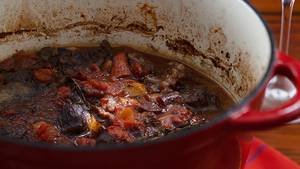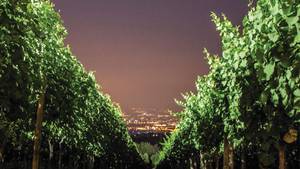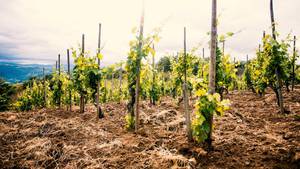In June, ten CAPS sommeliers from across Canada — regional winners all — were flown to Porto, Portugal on an intensive study tour to compete in the first round of the challenge to become Canada’s first-ever Master of Port. CRU associate editor, Kim Gertler, joined them on a quest revealing glimpses into Port’s storied past and, perhaps, even a whiff of the future of Port and Douro wine culture …
The winemaker is banging on the window between the pickup truck’s cab and cargo area. He’s waving us to get out of the open back of the truck. We jam into the front with the other sommeliers. “You’re better off in here — I don’t want to lose you guys.”
In a few seconds we are zigging and zagging up a dizzying 30-degree pitch on a crazy series of switchbacks in the twisting vineyards that rise steeply up the Douro river valley. Even inside the truck’s cab, the bumpy, rutted dirt path is bouncing us around — there’s no way we would have lasted a minute in the back. It’s a vivid introduction to the extremes that faced the stalwart souls, who first built the socalcos (stone walls) into these sharp hillsides by hand, thousands of years ago. Etching out the topography of the valley around each twist and turn, the vineyard terraces have become the Douro’s defining trademark.
And here we are — way up in the twisting rows of vines planted in the ‘schist’ granitic soils at Quinta de Nápoles with Niepoort winemaker Luis Seabra. We hop out to admire — not the touriga nacional — not the tinto roriz, but the pinot noir vines he’s excited to show us. The vines are impressive — it’s an unlikely grape for this hot region — we’re all slack-jawed as we look up to gaze at the valley below: “the light here is amazing — every moment is different,” says Luis. Once you are here, “It’s easy to see why many feel it’s the most beautiful wine region on the planet.” It’s also one of the oldest — some say the oldest — of organized wine appellations. Time to crush some Douro history.
Three Factoids Sommeliers Need to Know About Port and Douro
Factoid 1: The Douro Valley is the world’s first classic wine “appellation” legally demarcated
as such in 1756 — that’s 262 years ago, but wine has been made in this valley for more than
two thousand years. According to Wines of Portugal, its 4,000 years.
Factoid 2: In the 1600s, the British were at war with the French and boycotting their wines.
So England turned to Portugal in search of a new supplier, beginning a fruitful and ongoing
partnership in the production of Port wines that persists to this day.
Factoid 3: The Douro Valley is not only the main geographic feature of the region but also —
until recent years — provided an avenue of transportation for its wines to travel down river to be
processed, aged and readied for market.
The big barrels of Port wine were couriered downstream to Porto in flat-bottomed cargo boats known as barco rabelos. To survive capsizing accidents, enough air was left in the barrels to keep them buoyant. To prevent the Port wines from oxidizing and spoiling, a hearty helping of Aguardente Vinica was added. The wine-based spirit arrests the fermentation process and preserves the flavour and integrity of Port. The British wine consumers reacted most positively to the alcohol-bolstered wines. That fortification is one of the reasons that Port can continue to age and develop nuances for decades.
As we stroll the cool, modern deck that encircles the Quinta de Nápoles winery, we are basking in the serene afterglow of a classic bacalhau lunch. As a strawberry tart hits the table, Luis, who has been festooning us with sumptuous wines throughout the meal, appears with a sly smile and a decanter. It’s a surprise blind tasting. He meticulously pours into each of our glasses a browny-pink wine with a touch of orange at the rim. On closer inspection, there are tiny purple particles in the wine. A swirl and a sip and I’m in a garden somewhere in my youth — I could go on here, but instead, here are the tasting notes from British Columbia-based sommelier Leagh Barkley (Best Sommelier of Bordeaux 2017, wine director, Il Caminetto, Whistler, British Columbia):
“The visual aspect already gives away the age on this delicious wine, copper and amber reflections on a brick hue. Tertiary aromas dominate on the nose but there are still signs of sweet red berries, notably cherries. The bouquet begins with an exciting mix of baking spices; cinnamon and nutmeg, and then exotic savoury spices like crushed cardamom and candied ginger. It develops into an earthy component where the extended oak ageing is evident, aromas of cedar and sandalwood. On the palate, the sweetness is balanced with a slight bitterness, which provides surprising structure and length for such an old wine.”
Old wine indeed. We all do our best to guess — but most of us are years away — it’s a 1959 Niepoort Colheita and it was truly sublime.
In the words of global wine diva Jancis Robinson, “Portugal is on a roll.” You can feel it in the air — down river from the Douro Valley — in the bustling city of Porto. Port built this city — rather, these cities — across the river is Porto’s twin city, Vila Nova de Gaia. It’s here where the bonded lodges of the venerable Port brands proudly cluster along the riverbank. With its medieval old-world charm and its historic span bridges, Porto is a place like no other, prospering as an international hub of commerce for more than two thousand years — and for at least the past 800 years, much of it booming around the bustling trade of Port. Its unique urban riverfront is just one of the reasons it was declared a UNESCO heritage site in 1996. (The Douro Valley is also a UNESCO heritage site.)
Porto is truly the “Port of Port.” Port has played the starring role here, helping to forge a city where wine is the ‘gasoline’ in the engine of its progress. As a nod to that heritage, many of the port lodges have vintage barco rabelos proudly docked along their riverfronts, even though these days, the wine arrives in tanker trucks, not by boat. The lodges are popular attractions, vying for visitors with tours, restaurants, shops and nightclubs.
We are in the control centre of the throbbing heart of all things Port— the Instituto dos Vinhos do Douro e do Porto or IVDP. The gorgeous neoclassical edifice was constructed to house the Banco Commerical do Porto in 1843, but now its vaults protect the fermented treasures of the Douro. To say that port is highly regulated is an intense understatement. Even in the compliance-obsessed world of fine wine, the IVDP raises the control freak bar to new heights. Here, each and every vineyard parcel is analyzed on a meticulous 1200-point system based on 12 key elements and graded across six tiers of quality. In the vintage halls of its sub-floor, wine scientists scurry about in white lab coats. Every finished wine must pass a rigorous laboratory test and critical tasting. From the vineyard to the winery to the store shelf, every step in the chain of production and consumption is closely monitored and governed.
But even here at the heart of Port’s mission control, there are tremors of trepidation. There is cause for concern that the millennial generation hasn’t quite come to grips with Port. Some think younger drinkers are wary of the higher alcohol levels, others see it as an image problem, the perception that Port is an old man’s drink — a single glass, best enjoyed after a fine meal, maybe with a cigar. As Erin Beazley, a young sommelier from Halifax puts it:
“I think Port is still seen as your grandfather’s drink but the stigma is definitely changing. A lot of trendy bars and restaurants are now incorporating Port into their cocktail and wine programs in ways that attract the younger generation. I think part of it is also to do with lack of education or understanding of Port. If I (and other Somms across Canada) can spread the word and lightly educate younger consumers I think Port will catch on and make a huge comeback!”
So the IVDP and the port intelligentsia are on a mission. Companies are broadening their portfolios to include White Port, younger, fresher and fruitier port wines, some with lighter alcohol. There are cookbooks and recipes for cooking and pairing with port wines. There’s a major campaign to introduce Port in cocktails.
You can see the millennial makeover of Port in action at the rooftop deck of the “Open Space Porto Cruz” in Vila Nova de Gaia. Touted as an interactive port experience, the building boasts slick exhibits, posh tasting salons and a bistro where ports are paired with marinated mackerel, octopus and scrumptious cinnamon braised duck confit. But here, up on the rooftop, where a mix of tourists and locals are grooving, sipping and nibbling while the DJ drops the latest by Drake, it feels more like a hipster nightclub. As Porto and Vila Nova de Gaia twinkle below in the twilight, it’s the perfect time and place to try a port cocktail. The White Port and tonic is the perfect refresher after a long, hot day in the Douro.
If there’s a movement to disrupt the making and marketing of port, it seems far away as we tour the tasting cellar of Pocas Junior. This brand has been in the same Portuguese family for 100 years and you can sniff the aroma of that tradition in the damp cellar air.
We are here for a special barrel tasting led by winemaker and master-blender, André Barbosa and director of commerce and family member, Pedro Poças Pintão. But we soon realize, as we sample ports that are 20, 40 and 60 years old right from the barrel that this is more than a tour, it’s a taste of history. Quebec sommelier Gabrielle Plastres shares the experience:
“Since we tasted directly in the barrel chamber the experience was incredible, but I have no written notes of those amazing discoveries, only memories and great ones. I recall having this realization about the difference of a Colheita 1997 and a tawny with a mention of age of 20 years old. The tawnies with mention of age are meant to be a signature for the house, something steady. When, on the opposite side of the tawnies, the Colheita is created to have a distinct taste of the vintage, a richness and flavour unique to the year it reflects. I realized my preference is for the distinctiveness of the Colheitas.
The most memorable product of Poças Junior is definitively the Quinado, the hybrid between a port wine and a vermouth — an original and historic product with an herbaceous taste, orange peel and burnt caramel, mixed with the richness we love about Port. What a discovery!”
Here, at Pocas Junior, amongst the great barrels of the past and those laying in wait for future tasters, there’s truly a sense that the proprietors and their team don't so much own the port, but more so that the honour has fallen to them to be the privileged custodians of these barrels for future generations — the keepers of the flame if you will. Swirling my last sip of that Quinado, I recall a phrase passed on to us that sums up that moment in time perfectly -
“Port is the freshness of youth with the complexity of age.”
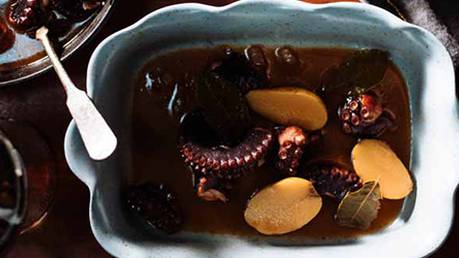
Portuguese Octopus Stew
Master of Port semi-finalist José Luis Fernández recommends a medium-bodied red wine (2014 Dona Matilde Douro Tinto) made from a blend of touriga nacional, tinta roriz and tinta amarela. According to José Luis Fernández “the wine has notes of fresh and ripe red fruits, with nice floral hints and a subtle savoury component….It is delicious and definitely easy drinking. The wine compliments the dish with its savoury component and vibrant acidity cutting through the richness of the dish making for a harmonious combination.
2 lb octopus
1/2 white onion, diced
4 tbsp olive oil
2 garlic cloves, sliced
3 medium potatoes cut into quarters
1 tsp tomato paste
1 tbsp red pepper paste
1 tbsp red pimento paste
3/4 cup dry red wine
1 pinch fresh parsley
1 bay leaf
1 tbsp cumin
1 1/2 cups water
Salt, to taste
Pepper, to taste
Directions: Wash and cut octopus into bite size chunks. Sauté the onions with the garlic in olive oil at medium heat in a medium-sized pot. Add the octopus and sear it slightly, then add the wine, water and the rest of the ingredients. Cook at medium heat until everything is tender and cooked through.
Pairing: 2014 Dona Matilde Douro Tinto
Sommelier: José Luis Fernández, Runner-up Best Sommelier of Ontario 2017, Quatrefoil Restaurant, Dundas

